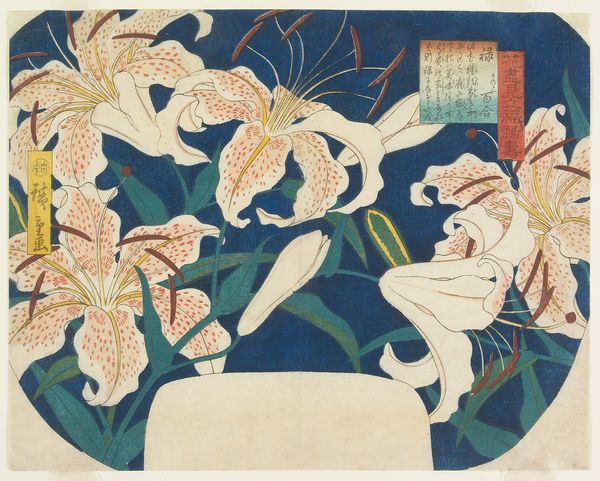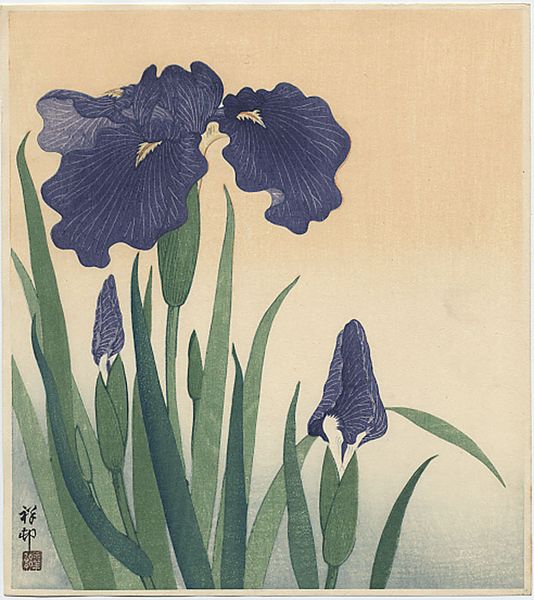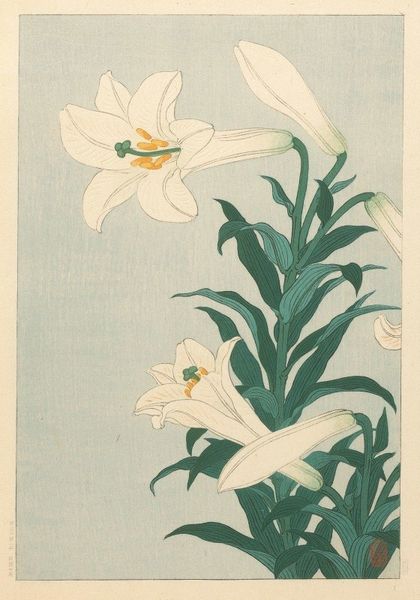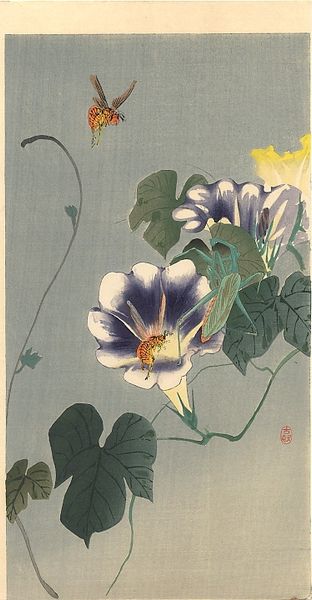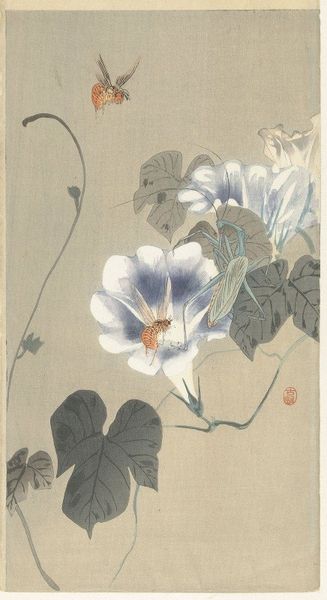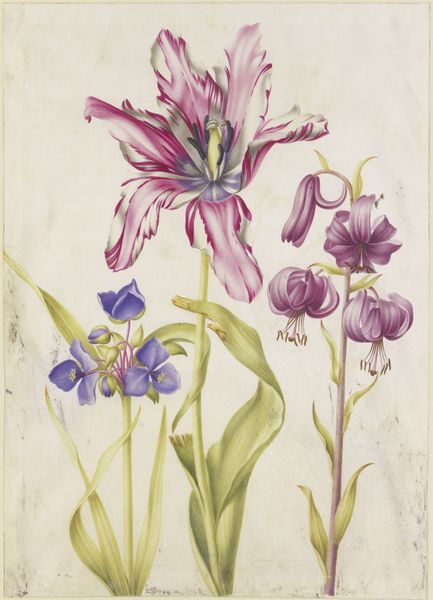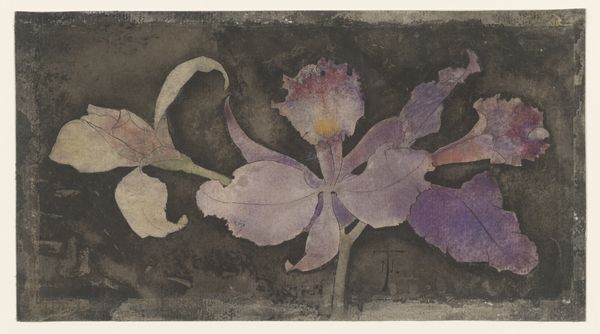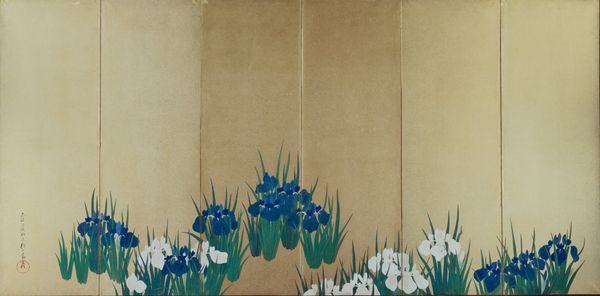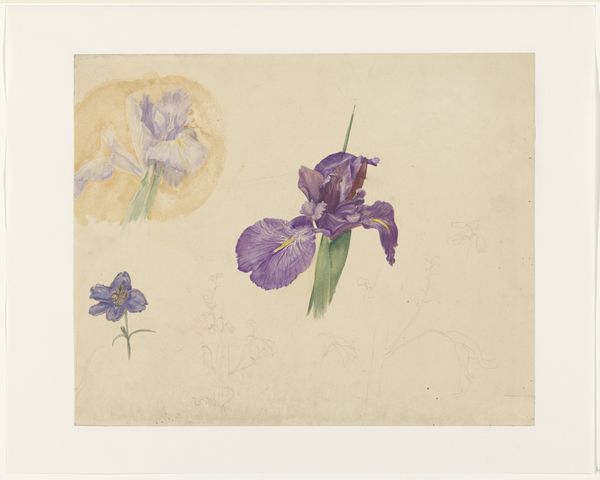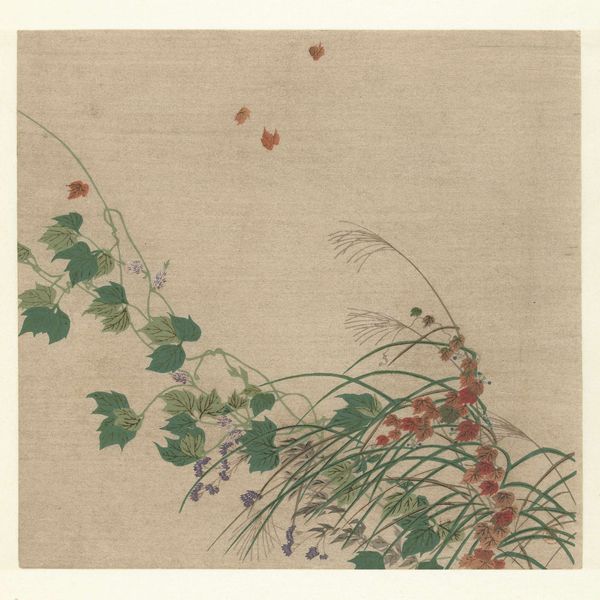
Dimensions: height 241 mm, width 251 mm
Copyright: Rijks Museum: Open Domain
Tsukioka Kôgyo made this woodblock print of irises, its date is unknown. The composition and execution of the artwork exemplify the Japanese aesthetic of the early 20th century, a period marked by both reverence for tradition and engagement with modernity. The visual language of the artwork is rooted in the Rinpa school, known for its decorative and naturalistic depictions. The irises, with their intricate patterns and bold colors, are not just botanical studies but also carriers of cultural meaning. In Japan, irises are associated with the Boy's Day festival, symbolizing strength and vitality. Historical records and studies of Japanese art institutions of the time indicate that the Rinpa style experienced a revival during this period, suggesting a conscious effort to reclaim and celebrate national artistic heritage in the face of Western influence. By studying the institutional and social contexts in which works like this were made, we can gain a deeper understanding of the complex interplay between tradition, modernity, and national identity in early 20th-century Japan.
Comments
No comments
Be the first to comment and join the conversation on the ultimate creative platform.
